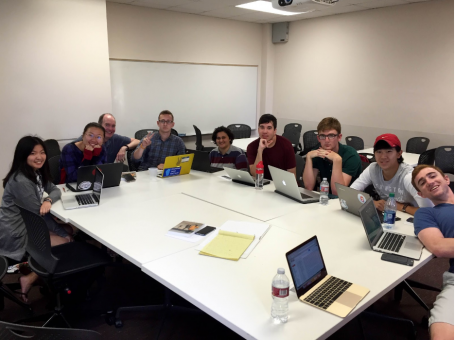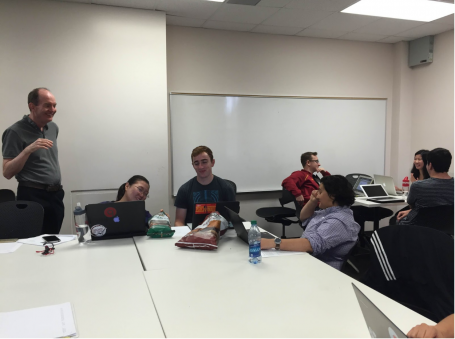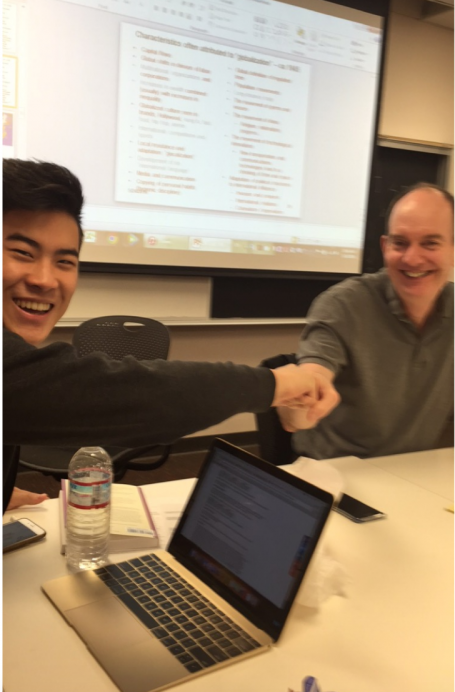By: Zachary Kennedy, Anna Lipscomb and Jacob Lokshin
We can’t believe that these two weeks in LA have passed by so quickly! It seems like just yesterday we walked into VKC 154, spilled a few pretzels, and debated who is the best Bing Bing (Li Bing Bing or Fan Bing Bing? Choose your side. It’s also worth noting that this debate produced our group name – Team Bing Bing).
As the name suggests, Team Bing Bing will be examining the presence of celebrity endorsements in China. We will be especially focusing on foreign celebrities. We don’t know what exactly we will find in China, but we predict that there will be a mix of both foreign and Chinese celebrities used to advertise products. We also believe that foreign and western celebrities will be more popular and visible in more westernized, metropolitan cities such as Shanghai and Beijing than in Hebi and Zhengzhou. We also anticipate foreign brands to use foreign celebrities more frequently than Chinese brands. We will examine how these stars are used to advertise products related to their areas (movie stars advertising films, sports stars advertising sports products, etc) as well as products unrelated (food, technology, luxury goods, etc.).
Although Friday was our last official class, it’s only the beginning of Global East Asia.
After reviewing our trusty toolbox of knowledge about things such as deculturization, reculturization, and acculturization (a term whose definition is still being debated by the entire class), we discussed our readings on Shanghai and Zhengzhou. We also went over general travel information such as packing and currency.
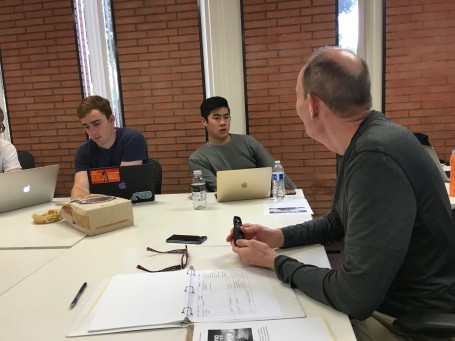
Professor Sheehan instills his knowledge and wise travel tips upon his enthusiastic pupils before they embark on their journey to a new hemisphere. He also shared a few thrilling stories of past GEA years, stimulating excitement and anticipation from the students about the adventures that lie ahead of them.
Although we come from a generation famous for being exceptionally tech-savvy, we were faced with our first challenge of many to come: installing the USC VPN on our phones and portable computers. Nevertheless, we put our minds together and overcame this obstacle.
We spent our Saturday scrambling to buy our sunscreens and bug spray (because it’s better to be safe than sorry, and Chinese insects are flying harbingers of death according to the USC Health Center), stuffing our suitcases full, emptying out our refrigerators, and contemplating the effects of globalization on our human existences.
On Sunday morning, we literally rised and shined. Between the times of 4-5 am, those of us on the group flight Uber’d to the airport (We encouraged Papa Sheehan to join the Uber bandwagon. Uber is now a Sheehan-approved mobile application). Since we got there early, we had to entertain ourselves.
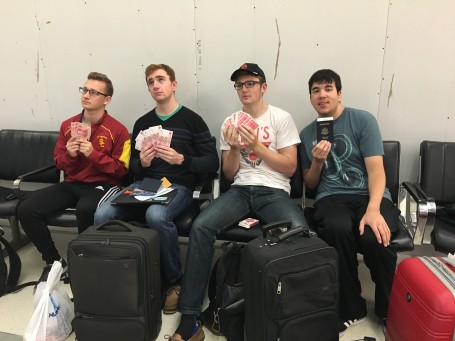
As punctual Trojans, the Global East Asia students got to the airport 3+ hours early. While waiting for their flight, they passed the time by playing Sushi card games, working on this blog post, eating banana bread (thanks Papa Sheehan for looking after our empty stomachs!), and getting pumped for China (and internally panicking of the short layover time in SFO… oh, the joys of travel).
The 45-minute layover in San Francisco was quite an experience. Although our flight was only about an hour, we spent roughly half an hour sitting in the plane at SFO because we couldn’t get off since another plane was still at our gate. When we finally got off, we dashed to the international terminal – it was extremely close, but we made it!
Since we wanted to get adjusted to China time, most of us pulled all-nighters before (or we were frantically trying to pack our bags and figuring out where we put our passports). Therefore, most of us spent the 12-hour flight sleeping and watching movies/TV shows on our mobile devices. Some of us stretched our legs and walked around the airplane looking for snacks.
When we finally got to Beijing it was May 30th (thanks to the 15 hour time difference)! Although we may be a slightly jet-lagged, we can’t wait for all the adventures and stories and crazy experiences to come!



